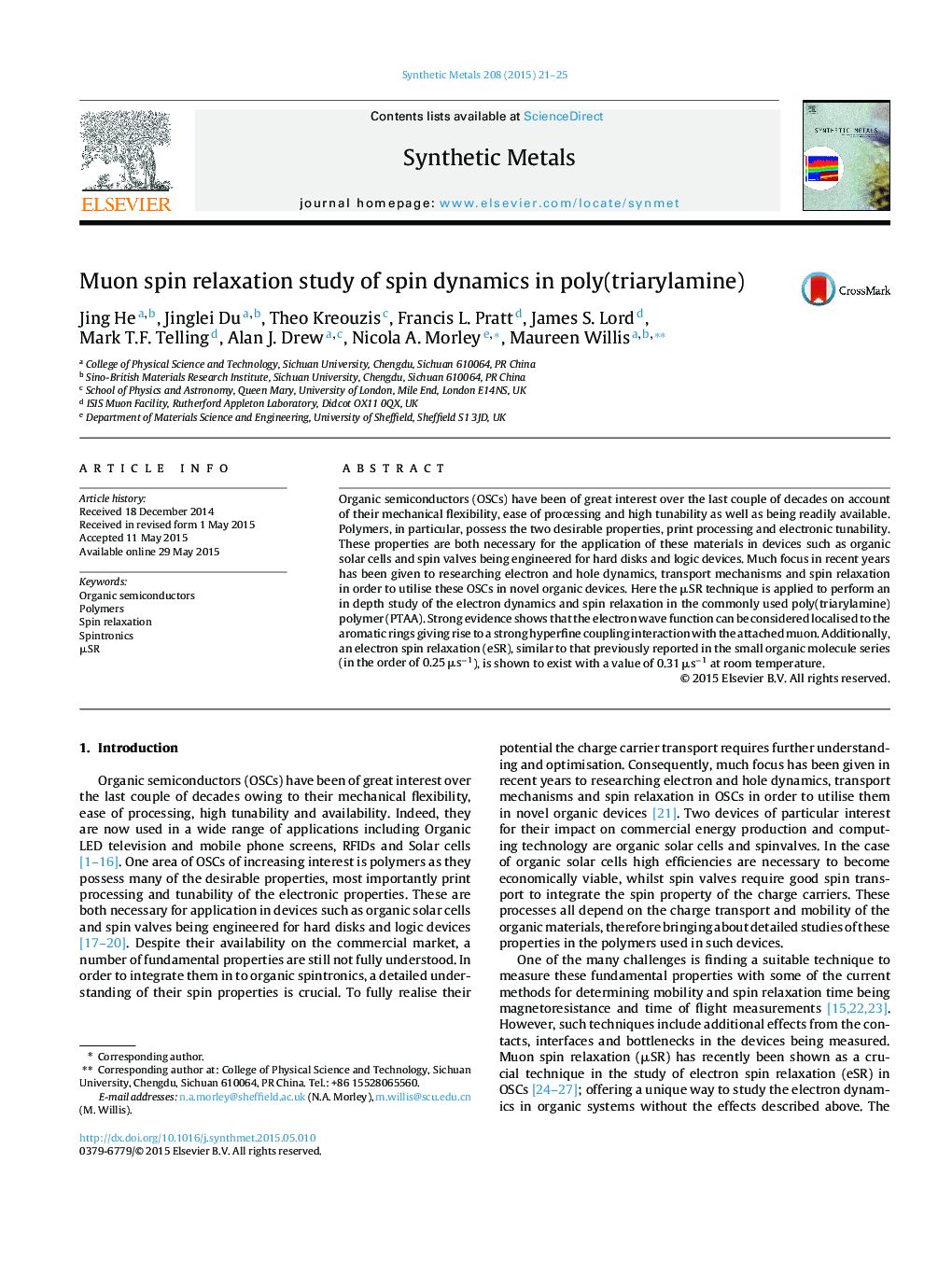| Article ID | Journal | Published Year | Pages | File Type |
|---|---|---|---|---|
| 1440431 | Synthetic Metals | 2015 | 5 Pages |
•The μSR study of the spin dynamics in PTAA.•The DFT calculation of the muon adduct sites.•The presence of an eSR process equivalent to that in small organic molecules.
Organic semiconductors (OSCs) have been of great interest over the last couple of decades on account of their mechanical flexibility, ease of processing and high tunability as well as being readily available. Polymers, in particular, possess the two desirable properties, print processing and electronic tunability. These properties are both necessary for the application of these materials in devices such as organic solar cells and spin valves being engineered for hard disks and logic devices. Much focus in recent years has been given to researching electron and hole dynamics, transport mechanisms and spin relaxation in order to utilise these OSCs in novel organic devices. Here the μSR technique is applied to perform an in depth study of the electron dynamics and spin relaxation in the commonly used poly(triarylamine) polymer (PTAA). Strong evidence shows that the electron wave function can be considered localised to the aromatic rings giving rise to a strong hyperfine coupling interaction with the attached muon. Additionally, an electron spin relaxation (eSR), similar to that previously reported in the small organic molecule series (in the order of 0.25 μs−1), is shown to exist with a value of 0.31 μs−1 at room temperature.
Graphical abstractFigure optionsDownload full-size imageDownload as PowerPoint slide
